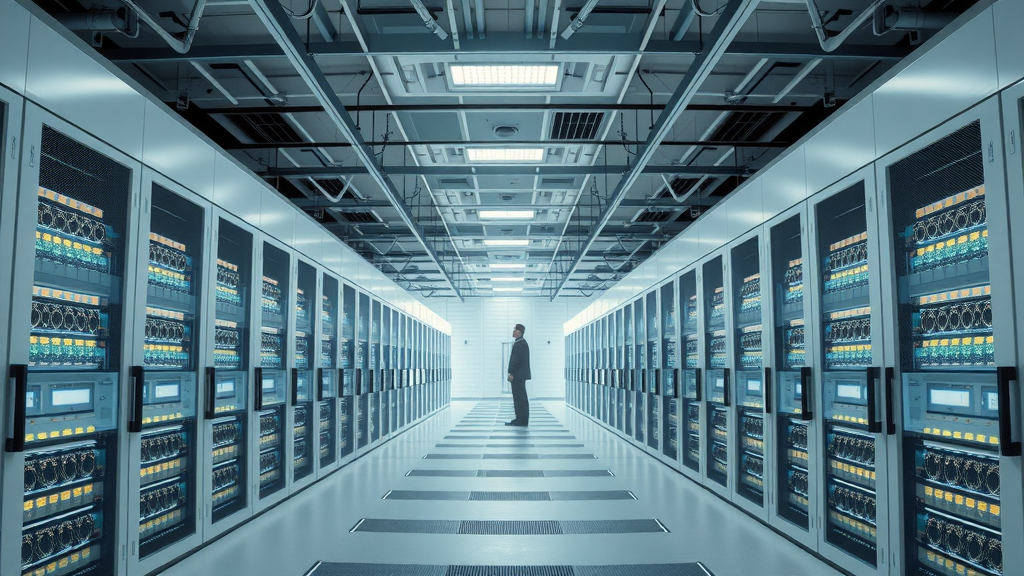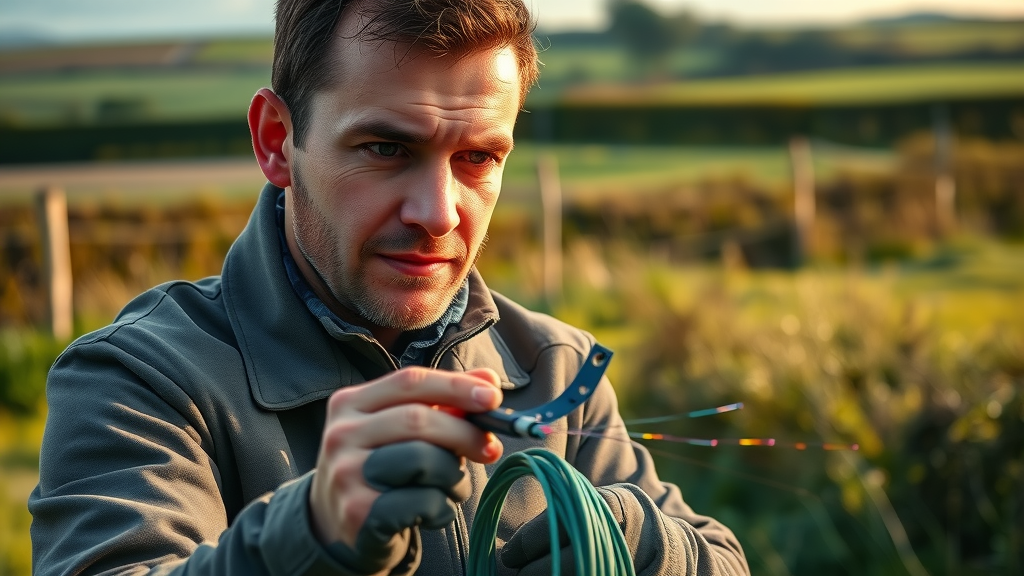Did you know? More than 95% of the world’s data surges beneath oceans through cables no wider than a garden hose! Most of us never stop to consider the hidden web of wires and devices working 24/7 to bring the internet to our doorstep. But understanding this vast internet infrastructure can help you make smarter choices about your home or business connection. In this article, we’ll lift the lid on the UK’s digital backbone—so you’ll finally know what’s really going on behind your screen.
“Over 95% of the world's data travels under oceans via cables no wider than a garden hose.” – Startling fact highlighting the global scope of internet infrastructure.

A Surprising Truth: The Reality Behind Modern Internet Infrastructure
Beneath every website click, video call, or message you send in the UK is a marvel of engineering and collaboration known as internet infrastructure. You might picture your home WiFi router as the centrepiece, but in reality, your connection starts thousands of miles away—on the seabed, at data centres, and even in far-flung network exchange points. It’s not just about wires or fibre cables; it’s about devices, servers, protocols, and partnerships between countless companies and organisations.
For British homeowners and business owners, understanding these layers is more than trivia—it’s practical knowledge. With growing work-from-home needs, streaming demands, and smart tech in our houses, knowing how your internet service provider (ISP) and the bigger internet backbone function can help you choose better, troubleshoot smarter, and prepare for future upgrades. The sooner you grasp the big picture, the clearer your digital world becomes.
What You'll Learn About Internet Infrastructure
- The journey of data from the web to your screen
- Key components and technologies of UK internet infrastructure
- Types of internet service providers and their roles
- How domain names and IP addresses power connectivity
- The importance of internet protocols, data centres, and exchange points
- UK-specific challenges and tips for reliable home internet
What is Internet Infrastructure Called? (People Also Ask)
Understanding the Term 'Internet Infrastructure'
When people ask, “What is internet infrastructure called?”, they’re curious about the complex network that makes internet access possible. Internet infrastructure is a broad term covering the physical hardware (like cables, routers, servers), the software (such as DNS servers and network protocols), and the services (like your internet service provider) that together enable data to travel from web servers around the world to your web browser at home.
This infrastructure isn’t just about hardware. Think of it as a giant, high-speed delivery network for digital information. At every step—whether your web page is loading or your email is sending—multiple components are in play: optic cables, local networks, exchange points, routers, and more. In the UK, companies like Openreach lay the fibre optic cables, powerful data centres crunch the numbers, and trusted ISPs like BT or Virgin Media make sure your home is always connected. Without these mighty, often invisible systems, our modern internet experience would simply not exist.

Breaking Down Internet Infrastructure: The Building Blocks
- Cables & Fibre – The backbone beneath our feet
- Network Devices: Routers, switches, firewalls
- Data Centres: Hubs of storage and processing
- ISPs: Internet Service Providers’ crucial local role
- IP Addresses & Domain Names
| Component | Role in Internet Infrastructure | Common UK Example |
|---|---|---|
| Fibre optic cable | Transmits data at high speeds | Openreach fibre network |
| Router | Directs data packets to devices | BT Smart Hub |
| ISP | Delivers internet to homes | Virgin Media |
| Domain Name Server | Translates domain names to IP addresses | Cloudflare DNS |
| Data centre | Hosts websites and services | Telehouse London Docklands |
If we dig deeper, we find that optic cables act as the internet’s motorways, carrying data at the speed of light. Routers and network switches are the traffic lights and roundabouts, ensuring information travels efficiently to the right device. Data centres keep your favourite websites up and running, day and night, while DNS servers work like an address book, translating familiar site names into the strings of numbers called IP addresses. And central to all of this is your internet service provider—the company ensuring your connection never skips a beat.
In the UK, the reliability of this system is world-class. Companies like Openreach consistently expand their fibre networks to both cities and rural areas, while data centres such as Telehouse Docklands in London remain global internet powerhouses. Without this invisible yet powerful machine, our work, entertainment, and daily communication would grind to a halt.

How Does Your Home Connect? UK Internet Service Providers and Solutions
Types of Internet Service Providers (ISPs)
- Broadband (Fibre, ADSL)
- Mobile broadband (4G/5G)
- Satellite/Fixed wireless
In the UK, internet service providers form the vital link between you and the wider world. The main types are broadband ISPs, offering services like fibre (superfast and reliable for most homes), ADSL (older, copper-based connections), mobile broadband via speedy 4G/5G networks, and even satellite or fixed wireless options for homes in rural areas. Each brings its own mix of speed, reliability, and price points, catering to different needs—whether you want ultra-fast streaming in London, or just need to get online from the countryside.
These ISPs rely on multiple layers of internet infrastructure: cables laid by companies like Openreach, regional internet exchange points, proprietary equipment, and extensive partnerships with global data carriers. Service providers like BT, Sky, and Virgin Media, along with smaller regional ISPs, each build on this foundation to deliver a seamless experience right to your home router.
How ISPs Deliver Home Internet
From the street to your sofa, internet service providers manage a complicated dance of network technologies. First, your ISP brings fibre optic or copper cables to your area—sometimes directly to your home (known as FTTP), or to a street cabinet (FTTC) with final metres over copper phone lines. Routers provided by the ISP (like a BT Smart Hub) connect to these external cables, translating the data and spreading WiFi throughout your home. If you’re in a remote area, mobile broadband or a satellite dish might provide your only access.
Behind the scenes, the ISP is responsible for keeping your connection secure and reliable. They use powerful data centres, maintain DNS servers, manage IP addresses and network protocols, and are on call if things go wrong. At each step—from your first sign-up to streaming your evening movie—multiple parts of the wider internet infrastructure make your experience possible.

What is Network Infrastructure and What Are Some Examples? (People Also Ask)
- Network switches and routers
- Physical cables (copper, fibre)
- WiFi access points
- Firewalls and security hardware
- Data centres and server rooms
Network infrastructure refers to all the hardware and software that allows computer devices to connect, communicate, and share data—inside your home and around the world. The basics are simple: routers and switches direct traffic, physical cables carry the signals, and WiFi access points broadcast wireless signals for your phone and laptop. Firewalls and security boxes guard your data, while local data centres and server rooms power everything from web pages to online games.
Examples of network infrastructure range from the router sitting in your living room to the industrial-scale data center in Docklands. All these elements together guarantee secure, reliable, and super-fast internet access across UK homes and businesses. Without well-managed network infrastructure, problems like slow connections, dropped signals, and security risks become common headaches for every internet user.
Domain Names & IP Addresses: The Essentials of Internet Infrastructure
How Domain Names and IP Addresses Work
Every time you type a domain name like www.bbc.co.uk into your web browser, your request goes through a clever process called DNS resolution. DNS servers take your easy-to-remember name and match it to the correct IP address, like 192.168.1.1. This numeric address tells your device exactly where to find the web server you want, no matter where in the world it’s located.
In essence, domain names make the internet accessible for humans, while IP addresses are essential for machines to locate and connect to each other. Your internet service provider manages a stack of DNS servers, and companies like Cloudflare or Google public DNS help keep websites speedy and secure. Without this behind-the-scenes magic, the user-friendly internet we know today simply couldn’t exist.
| Term | Purpose in Internet Infrastructure |
|---|---|
| Domain Name | User-friendly web address (e.g. www.bbc.co.uk) |
| IP Address | Unique identifier for every device on the network (e.g. 192.168.1.1) |

“Without IP addresses, even the best internet infrastructure couldn’t connect you to your favourite website!”
Understanding Internet Protocols and Data Routing in the UK
The Role of Internet Protocols (IP) in Internet Infrastructure
Internet protocols are the rulebooks that make everything work. The most important is the Internet Protocol (IP), which helps split your data into packets, label them with IP addresses, and make sure they travel the best route across networks to reach their destination. Other protocols, like TCP (Transmission Control Protocol) or HTTP/HTTPS (for web pages), guarantee that data arrives intact and in the right order.
In the UK, ISPs invest in robust protocol management, collaborating with equipment manufacturers and global partners, to handle millions of simultaneous connections. By relying on carefully standardised settings, these organisations ensure devices in your home—from smart TVs to computers—can communicate and access the full breadth of the internet safely and without interruption.
Internet Exchange Points: How the UK’s Data Traffic Flows
- DE-CIX in Frankfurt (Europe’s largest IXP)
- LINX (London Internet Exchange)
- Smaller UK regional exchanges
At some point, all online traffic in the UK meets at Internet Exchange Points (IXPs). These are crucial, physical locations where ISPs and large networks (like cloud providers or content delivery networks) swap data at high speeds with minimal delay. The London Internet Exchange (LINX) is one of the largest IXPs in the world, handling vast swathes of Europe’s and the UK’s traffic. Regional exchanges make sure local data—including for businesses and public organisations—can travel quickly and cost-effectively.
The presence of powerful exchange points in places like London and Frankfurt ensures your emails, video calls, and web browsing stay efficient, safe, and fast—no matter where in the UK you live. For business property owners, these IXPs mean faster transfer speeds and resilient back-up options in case of outages, making them a cornerstone of modern internet infrastructure.

Why is Internet Infrastructure Important? (People Also Ask)
- Supports work-from-home setups
- Enables remote medical appointments
- Facilitates e-commerce and communication
A strong, up-to-date internet infrastructure is no longer a luxury—it's the lifeline of modern homes and businesses in the UK. As work-from-home becomes common, reliable connections are vital for virtual meetings and collaboration. Fast networks make telemedicine possible, helping patients consult specialists from home, even in rural areas. Whether shopping for groceries online, chatting with friends, or running a digital business, a resilient infrastructure ensures seamless service—without dropped calls or endless buffering.
Business owners, especially, depend on robust data centres and exchange points to reach customers quickly and keep sensitive information secure. As more aspects of our lives move online, understanding and investing in good infrastructure is a safeguard against downtime, frustration, and missed opportunities.
“No modern home or business can function efficiently without solid internet infrastructure.”
What Does Internet Infrastructure Look Like? (People Also Ask)
While most of internet infrastructure stays hidden in data centres or beneath our streets, elements like street cabinets, telephone poles, and even the humble router right in your home are all vital parts of the system. A large green box at the end of your road? That’s a cabinet connecting your house to the main fibre optic or copper line, passing data at mind-boggling speeds.
Inside, your wireless router acts as the gateway to the global internet. In cities, infrastructure includes miles of underground cables, high-rise data centres, and rooftop wireless access points. In rural areas, satellite dishes and mobile masts fill in gaps. Altogether, it’s a seamless bridge connecting billions of people—one invisible but extraordinary cable at a time.

Challenges Facing UK Internet Infrastructure – and How to Stay Connected
- Old copper wiring vs. new fibre networks
- Rural connectivity issues
- Weather and accidental cable cuts
- Policy/regulation changes
- Cybersecurity concerns
- Upgrade to fibre broadband where available
- Choose reputable ISPs
- Use modern, secure routers
- Consider network extenders for coverage
Despite the UK’s advanced digital networks, challenges remain. Much of the old copper wiring still lingers, threatening slowdowns compared to the incredible speeds of modern fibre optic cables. Rural areas often face limited options, forcing some homes to depend on mobile broadband or satellite—slower and less reliable than urban connections.
Weather is another common hurdle, with storms occasionally damaging exposed cables or fibre lines. Periodic policy changes, growing privacy laws, and new cybersecurity threats keep ISPs on their toes. To make sure you stay connected: always upgrade to fibre when possible, choose a trusted internet service provider with good customer support, use the latest router models, and add network extenders if your home is large or has WiFi dead spots. Staying informed—and proactive—can often mean the difference between frustration and flawless streaming.

FAQs on Internet Infrastructure
-
How secure is home internet infrastructure?
Home internet is generally very secure if you use strong passwords, keep firmware updated, and choose ISPs with robust cybersecurity measures. Modern routers block most threats, but regular updates are your best defence. -
What’s the difference between ADSL, FTTC, and FTTP?
ADSL uses older copper telephone lines and is slower. FTTC (Fibre to the Cabinet) uses fibre optics partway, then copper for the final distance. FTTP (Fibre to the Premises) is the fastest—fibre all the way to your door. -
Can I check which type of internet infrastructure is in my area?
Yes! Major ISPs like BT and Virgin have postcode checkers online. Local authorities may also have rural broadband maps to show what’s available. -
Do all ISPs use the same infrastructure?
Most share the same base networks (like Openreach), though some, like Virgin Media, build their own. Smaller ISPs may focus on rural areas or specialist connections. -
How does weather affect internet infrastructure in the UK?
Severe weather can slow or disrupt service, especially with exposed overhead lines. Modern fibre is less vulnerable than copper, but no system is immune. ISPs act fast to repair damage after storms.
Key Takeaways: Making Sense of UK Internet Infrastructure
- Internet infrastructure is the unseen powerhouse behind modern life
- ISPs, data centres, domain names, and protocols all play essential roles
- Upgrades to infrastructure bring faster speeds and greater reliability
- Smart choices ensure your connection stays robust and secure
Conclusion: Your Guide to Navigating the World of Internet Infrastructure
Understanding how internet infrastructure powers your home or business puts you in control. Whether upgrading, troubleshooting, or just marvelling at the digital world, a little knowledge goes a long way!

We'd love to see your comments on this! Have you had challenges with your home internet infrastructure? Plans to upgrade? Share your experiences and questions below!
Understanding the intricacies of internet infrastructure is crucial for making informed decisions about your home or business connectivity. To delve deeper into this topic, consider exploring the following resources:
-
“Internet infrastructure”: This comprehensive article provides an in-depth look at the physical systems that facilitate internet communication, including networking cables, cellular towers, servers, internet exchange points, and data centers. (en.wikipedia.org)
-
“Internet backbone”: This resource explains the principal data routes between large, strategically interconnected computer networks and core routers of the Internet, highlighting the critical role of the internet backbone in global connectivity. (en.wikipedia.org)
By exploring these resources, you’ll gain a deeper understanding of the components and functions that make up the internet infrastructure, empowering you to make more informed decisions about your connectivity needs.
 Add Row
Add Row  Add
Add 





Write A Comment